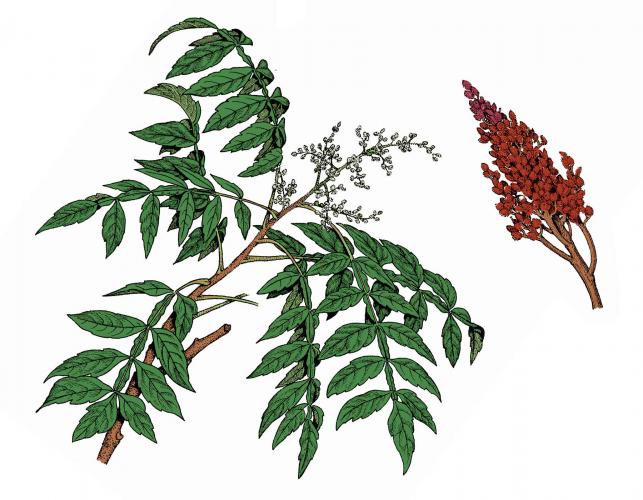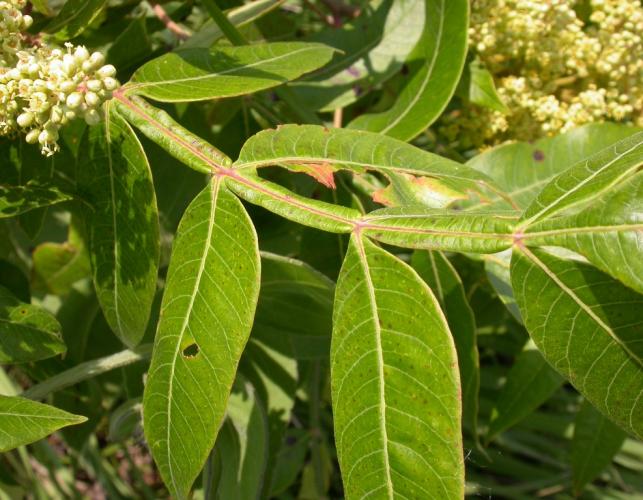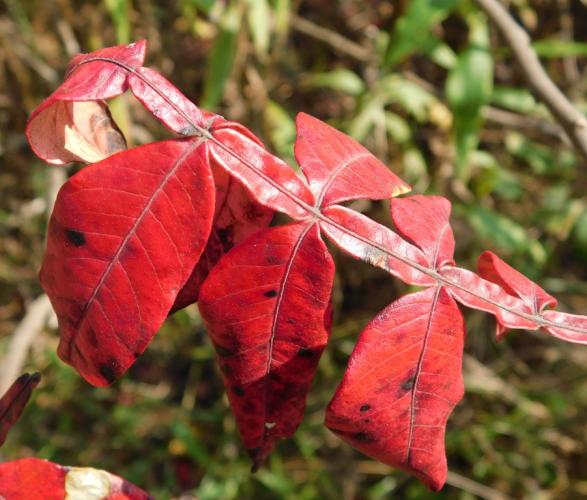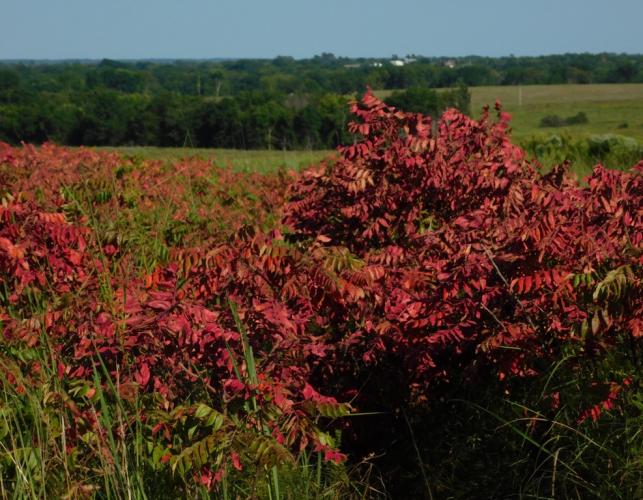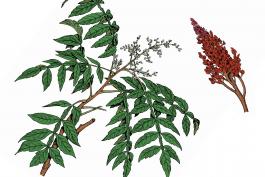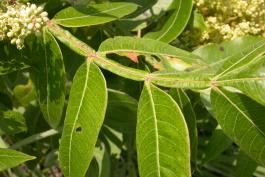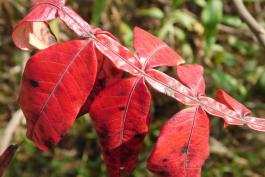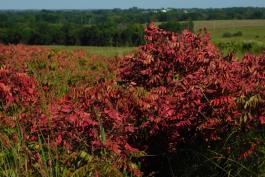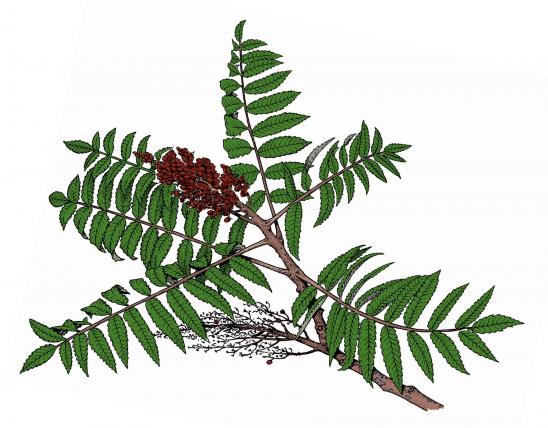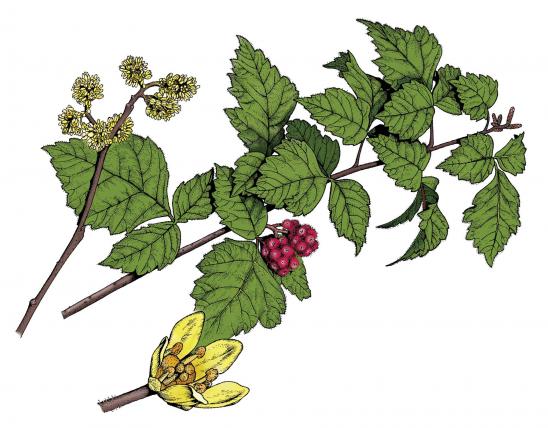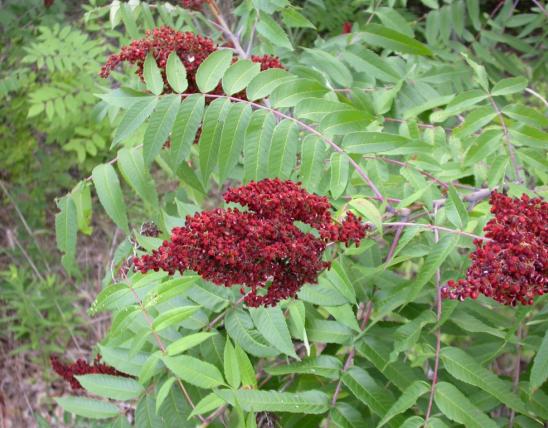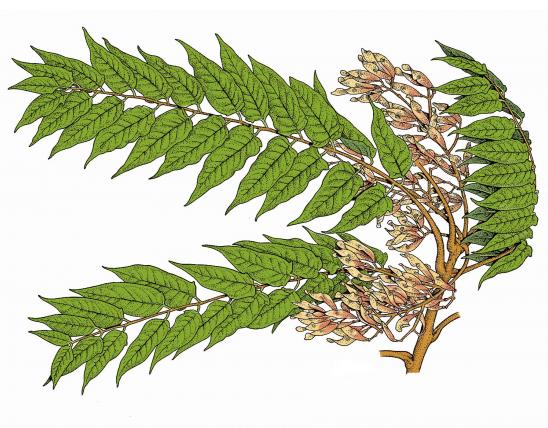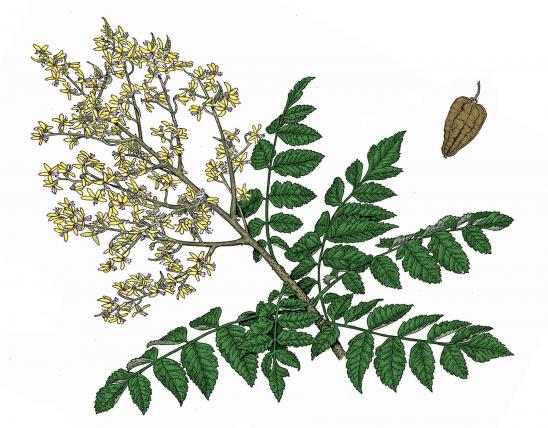
Winged sumac is a slender-branched shrub to small tree with a rounded top; it forms thickets from root sprouting.
Leaves are alternate, feather-compound, 5–12 inches long, central stem hairy and broadly winged; leaflets 7–17, tip pointed, base ending at a sharp angle, margin usually without teeth; upper surface dark green, shiny; lower surface paler, hairy; broken leaves and leaf stalk bleed a white sticky sap. Leaves turn bright red in fall.
Bark is thick, greenish, brown to gray, some shallow grooves, pores red and prominent.
Twigs are brittle, green to reddish-brown, hairy at first, smooth later, bleed a white sticky sap when broken; pores dark.
Flowers late May–July, both male and female flowers in dense clusters at the end of new growth, on separate plants; clusters 6–8 inches long; flowers numerous, about ⅛ inch across; petals 5, greenish-white.
Fruits September, compact clusters, erect or drooping, persistent; fruit round, flattened, red, hairy, about ⅛ inch wide, 1-seeded.
Similar species: There are four species of sumacs in Missouri.
Height: to 26 feet.

This species is most common south of the Missouri River.
Habitat and Conservation
Occurs in prairies, thickets, open woods, rocky sandstone, chert and igneous glades, borders of woodlands generally in acid soils, old fields, roadsides, and along railroads. Winged sumac makes a desirable ornamental shrub due to its glossy, dark green leaves and brilliant red fall color. Its hardiness and thicket-forming growth make it good for parking lot and highway-median plantings.
Status
Regarding the name, winged sumac's scientific name is sometimes spelled "Rhus copallina," but the rules for scientific names argue against it. In this case, Carolus Linnaeus, the father of our scientific naming system, himself "discovered" this plant, and he named it "copallinum." The rules require us to use his original spelling. The "copallina" spelling originated when midcentury botanists argued that the Latin word "Rhus" is grammatically feminine and "corrected" Linnaeus’s name to match it. By the way, "copallinum" means "resinous" or "gummy." Perhaps Linnaeus named it for the fruits' resinous waxy or fleshy inner layer, between the fuzzy outer skin and the smooth stone at the center.
Human Connections
Winged sumac is growing in popularity as a landscaping shrub. Its brilliant ruby red fall color paints our roadsides in early autumn. The fruits have been crushed and used to flavor drinking water, and the tannin-rich bark has been used in the tanning industry. Native Americans and pioneers had many medicinal uses for this plant.
Ecosystem Connections
Many types of birds eat the berries, and deer occasionally browse the berries, stems, and foliage. Shrubby plants provide important cover for all kinds of animals.
